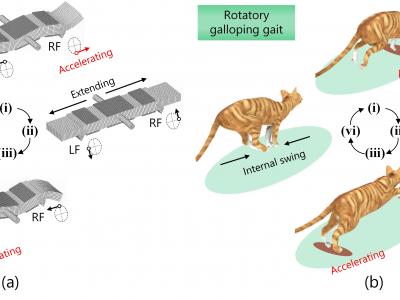Other

We present a finite-element-based cohesive zone model for simulating the nonlinear fracture process driving the propagation of water-filled surface crevasses in floating ice tongues. The fracture process is captured using an interface element whose constitutive behavior is described by a bilinear cohesive law, and the bulk rheology of ice is described by a nonlinear elasto-viscoplastic model. The additional loading due to meltwater pressure within the crevasse is incorporated by combining the ideas of poromechanics and damage mechanics.
- Categories:
 301 Views
301 Views
This study proposes and validates a data mining-based interface development method (DaMIM) to optimize menu-driven user interfaces. DaMIM comprises six steps—target task definition, user selection, data collection, application of data mining techniques, analysis and evaluation, and determination of alternatives. Cluster analysis is used as the data mining technique. The proposed method is validated using a program developed to measure the reaction times of menu selection.
- Categories:
 7 Views
7 Views
Cryogenic CMOS (cryo-CMOS) circuits are of-
ten hindered by the cryogenic threshold-voltage increase.
To mitigate such an increase, a forward body biasing (FBB)
technique in bulk CMOS is proposed, which can reliably
operate up to the nominal supply without problematic leak-
age currents, thanks to the larger diode turn-on voltage
at cryogenic temperatures. As a result, traditional circuits,
such as pass-gates, can reliably operate down to 4.2 K, and
their performance is augmented, e.g., digital circuits speed-
- Categories:
 36 Views
36 Views
A 3D WUCT system using a single ultrasound transducer is designed and automated. The dataset consist of the WUCT reconstruction results dataset used to train U-Net based semantic segmentation model. Also, dataset i) to study the effect of increase in the number of virtual transducer on reconstruction quality and, ii) effect of variation in the applied pulse width on the reconstruction are provided. The U-Net based semantic segmentation model is trained and used to evaluate dice coefficient corresponding to the phantom’s actual profile and reconstructed profile.
- Categories:
 73 Views
73 Views
3D-NAND flash memory is currently essential in the semiconductor industry due to the interference issue between memory cells of the conventional planar type. To vertically stack the memory, an oxide-nitride (ON) stack structure is formed using plasma enhanced chemical vapor deposition (PECVD) equipment. Thereafter, a part of the silicon nitride (Si3N4) layer is removed by wet etching using phosphoric acid (H3PO4) to make a space for the memory cell. It is important to selectively wet etch only the Si3N4 film while protecting the silicon oxide (SiO2).
- Categories:
 180 Views
180 Views
Extended reality (XR) head-mounted displays (HMDs) are increasingly starting to rely on wireless task
offloading in a bid to allow unobstructed XR user movement, while still rendering high-resolution video on
a remote processing node. An example is the Oculus (Meta) Quest 2. However, congestion and reliability
issues associated with the wireless network can cause high latency and an overall low quality of service (QoS).
Therefore, understanding XR user mobility is of vital importance for supporting XR applications in future
wireless networks.
- Categories:
 180 Views
180 Views
Although resonant vibration in the ultrasonic frequency range is thought as a power-intensive way for actuation, its application to untethered miniature mobile robots is still challenging because of lacking the onboard circuit that produces the ultrasonic signals with modulatable frequencies, voltages, and phases. To tackle this problem, first, the ultrasonic transducers whose longitudinal/bending vibrations share a common node was made to steadily support other components. Second, an onboard circuit was designed to convert the battery’s DC signal into multi-channels of ultrasonic signals amplified in a multi-level manner. Third, these components were compactly integrated to developed an untethered ultrasonic robot (U2sonobot) with fast, flexible, and load-carriable movements. The prototype was 54 × 52 × 46 mm3 in size and 76.5 g in weight, and its moving/carrying performance was assessed. At 59.3 kHz frequency, it yielded the maximal speed of 221 mm/s and the minimal step displacement of 0.3 μm. According to the wirelessly-received commands, it produced the flexible movements (e.g., those with adjustable speed/steering-radii and in-situ rotations) and climbed 8.9° slope. Moreover, it carried the maximal payload of 520 g and provided the minimal cost of transport of 3.9. The optical focusing/scanning system is a candidate application area for U2sonobot.
- Categories:
 50 Views
50 ViewsIn this work we present a study of micro-photoluminescence (PL) emission from a novel InGaN quantum well (QW) emitting structure with integrated micro-cavity, which can be used for VCSEL applications. The micro-cavity exhibiting Tamm plasmon optical states is formed by porous GaN distributed Bragg reflector (DBR) bottom mirror and top plasmonic silver metal mirror. Results of PL, Fourier imaging spectroscopy and finite-difference time-domain simulations are presented and discussed.
- Categories:
 80 Views
80 Views

